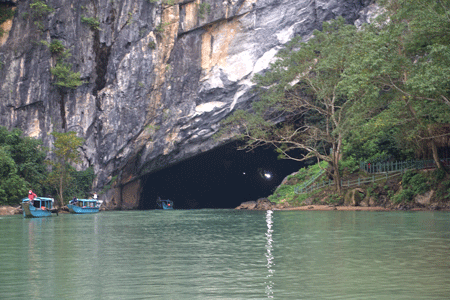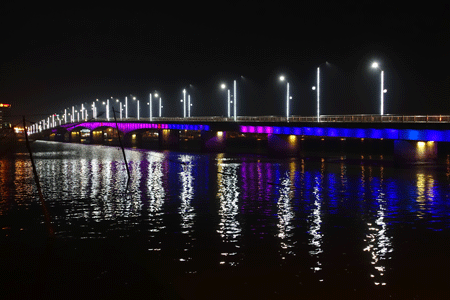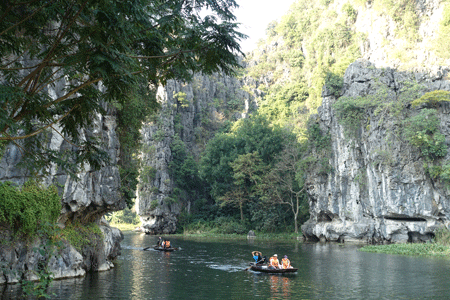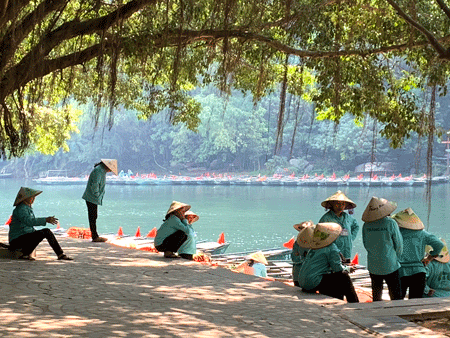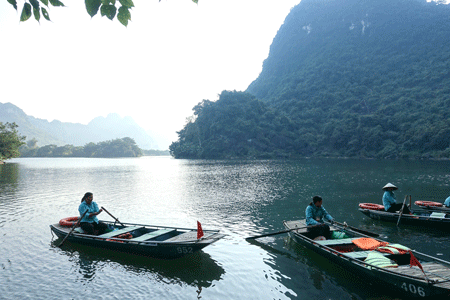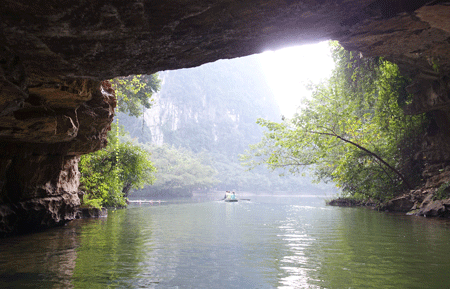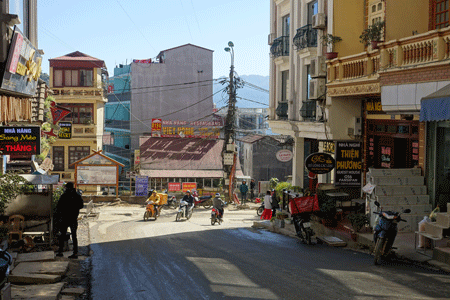January 1, 2020

It’s our hundredth day away from home. It’s gone by fast, and yet also seems like we’ve been gone for ages. Steve and I have spent a month in Portugal, a week in Myanmar, three weeks in Thailand, and about forty days in Vietnam, so far. As we expected, traveling in Europe versus Asia is like night and day. That’s a big part of why I wanted to explore Asia.
Pondering independent travel to Asia was kind of scary. The language barrier far surpasses that found in Europe, although we did have some similar challenges in areas of Morocco, where we found only Arabic. I knew SE Asia would push me out of my comfort zone, and it has. It’s been both challenging and thrilling.
Wins
- Chopsticks are no longer intimidating.
- Traveling with small, 38 liter backpacks versus larger options was the right call. We’re so mobile and packing is quick and easy. And seeing travelers hauling around multiple giant suitcases or enormous backpacks makes me even more appreciative (and maybe a little smug).

Us versus 
Them!!!
- Getting more and more silvery grey hair around my face (I’ve missed my stylist), but hey, at least grey is “in” now .
- Food – all of it, but in particular: Asian thick, doughy noodles, spring rolls that melt in your mouth, any meat with spicy lemongrass chili sauce, fresh, warm baguettes (residual effect of the French in Vietnam), the strong Vietnamese coffee, and Portugal’s specialty, the Pasteis de Nata (little custard pies – usually warm out of the oven).

Spring Rolls, everywhere in Asia 
Bun Cha, Hanoi specialty

Pasteis de Nata, a Portugal specialty 
Vientamese coffee
(with sweetened condensed milk)
- So far, we’ve had only a few, easily defeated skirmishes here in Asia with dreaded internal unrest (hoping that holds).

- Steve’s dual-duty flip flops (with a built-in bottle opener in the sole – brand: Reef) have come in quite handy. We’re never without a bottle opener and are ready for any drink related emergency.
- Staying most often in real neighborhoods, where locals work and live and children play, gives us the opportunity to feel immersed in the culture. Being in the thick of things, instead of in the tourist bubble zone, is often more challenging, but definitely worth it for the unique experiences it affords.

A rooster standing outside our hotel 
Neighbor cutting meat on our street
- Exploring countless man-made wonders including the awe-inspiring Golden pagoda in Yangon, the colorful and ornate Buddhist temples of Thailand, the charming red rooftops and black and white tiled sidewalks of Lisbon, the terraced rice fields of Sapa, and the beautiful lanterns of Hoi An (just to name a few).
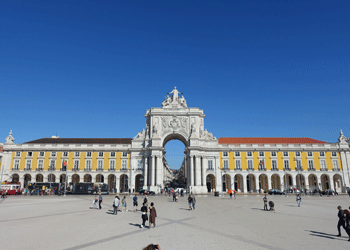
Praça do Comércio , Lisbon 
Wat Phra Chetuphon (Wat Pho) , Bangkok

Buddhist Temple, Chiang Saen, Thailand 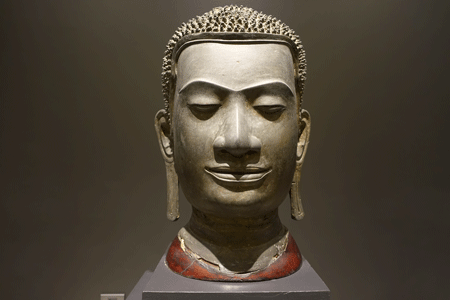
Bangkok National Museum

Vietnam’s Rice Terraces, Sapa 
Tomar, Portugal

- Getting up at sunrise just in time to watch a woman chase a water buffalo out of her vegetable garden on a steep mountainside in Sapa, Vietnam. She wildly waved her arms, screaming, and throwing the occasional rock with great fortitude.

Coimbra, Portugal sunset
- Having incredibly lucky timing (now and again), and happening upon such events as the Luang Prang Festival in Chiang Mai, Thailand (lantern festival), or walking into Tomar, Portugal, the very day of the annual torch procession of Knights Templar (and then finding that our room overlooks the procession route), or catching one of the most beautiful sunsets I’ve ever seen in my life because the restaurant we were trying to find was closed.
- Seeing the magnificence of nature while cycling through enormous karsts (limestone formations) on rural jungle backroads, hanging out with elephants, floating down remote and meandering rivers, lying on the glittering beaches of Portugal, trekking scenic mountains, admiring the green hillsides in Portugal (that reminded me of Tuscany), and exploring vast caves and hidden temples (just to name a few).

Bai Tu Long Bay, Vietnam 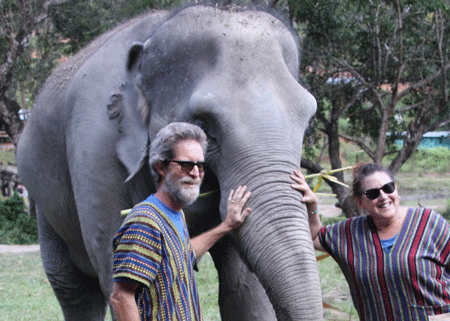
Steve, Elephant, & Tracy, near Chiang Mai

Bai Tu Long Bay, Thailand 
Tracy & Steve kayaking, Bai Tu Long Bay

Myanmar Sunset, Yangon 
Salema, Portugal
- Taking pictures is such a passion of mine! Here are a few of my favorites that haven’t been on my blog (I think!).

View from our lunch table, Hanoi, Vietnam 
Flower vendors on bikes, Hanoi, Vietnam
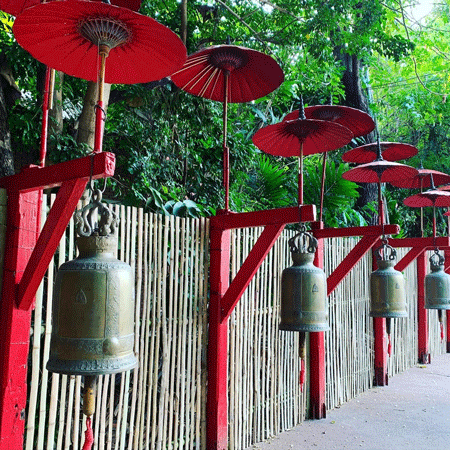
Bangkok, Thailand 
King Pedro IV Square (Rossio) Lisbon

Chiang Saen, Thailand 
Golden Pagoda, Myanmar
Losses
- When the hotel plumbing won’t handle toilet paper and all used tissue must be placed in a waste basket, even for number 2. Kind of gross. And pretty common. And I won’t even mention pit toilets… (oh, I guess I just did).
- Pretty disheartening that even in Hanoi, Vietnam, where no one has a clue what Thanksgiving is, there are “Black Friday Sales” everywhere, complete with giant signage. Commercialism wins, even in Communist Vietnam.
- Encountering a barking dog at night on a completely dark alley in a small town in Vietnam while riding a bicycle back to the hotel after dinner. Thought it was the end for me, and looking ahead, Steve had already passed the dog and left me in the dark (literally). Needless to say, I made it past the dog unscathed, but my heart was pounding out of my chest. No more dark alleys for me.
- Realizing it’s probably time for that knee replacement surgery when we get home (my poor knees!)
- No hot water at the Hoi An, Vietnam, homestay for over 36 hours. Heating our own water and bathing out of a bucket with a scoop. But no complaints from us because our host family had a much worse week. During our 7 day stay, both their kids, ages 2.5 and 4 months, had to go to the E.R. for high fevers twice AND the hosts sister was in a scooter accident and broke her arm and her leg. At the end of our stay the 2.5 year old had an emergency appendectomy! Hopefully better times ahead for their sweet family.

No hot water, so make do 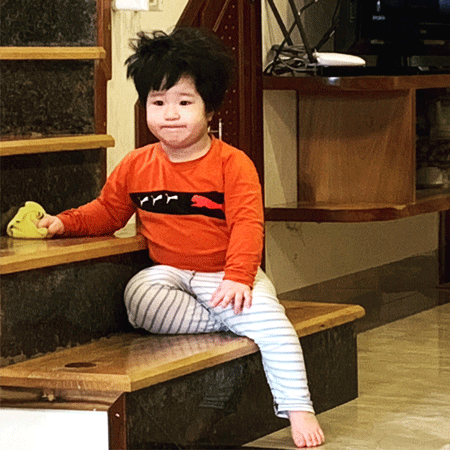
2.5 yr old daughter at our homestay in Hoi An
Lessons

- Train tickets are way cheaper if you buy them at the station vs. online – like half the cost (in Vietnam).
- Most of the world uses military time, i.e. 8:00 am is 8:00, whereas 1:00 pm is 13:00, and 4:00 pm is 16:00, and so on. It really makes so much sense. It’s way clearer, but I still find myself counting on my fingers to figure out the time.
- I’ve realized that using a pit toilet would be WAY easier with a skirt on. It’s the western pants (loose, gauzy capris in my case) that require an extreme case of contortion-ism when toileting here in Asia.
- You can never have too many zip lock baggies (I didn’t bring enough).

(the White Temple) in Chiang Rai.
It was very crowded with lots of Chinese tour groups.
- Other nationalities have a FAR different concept of personal space, especially the Chinese. Giving you a little shove is perfectly acceptable, if you are in their way. Cutting in line is also just fine. It’s nothing personal. They don’t even notice….it’s just how it is, whereas, as an American, if I barely brush against someone I automatically apologize. Funny.
- Blogging takes tons of time, as in probably 6-10 hours or more per post. This includes writing, editing, proofreading, getting my editor (Steve) to read through, and selecting and formatting pictures. That being said, I’m so pleased when I finish a post and have preserved wonderful memories.

- The “Green Bus” out of Chiang Mai is actually red. Ok, then. Good to know.
- The best way to cross the street in a SE Asian city is to tag along, up close and personal, with a local. When they move, you move, and don’t dare look at the oncoming traffic. Because if you do, you’ll hesitate, and then you’re in big trouble.
- Travel gives so much. As I travel I gain an amazing perspective on people, our differences and similarities. Getting to know our homestay host and her family, or making a connection with a waiter at a restaurant we’ve frequented, or befriending other travelers from all over the world, is what makes travel so special (and unlike anything else).

- So many people live with so little. They work hard, have loving families and communities, and are happy. Traveling with minimal belongings really brings into focus how unimportant the material possessions back home are, and how very important relationships are (I miss my family, friends, and dog).
What’s Ahead
Our rough plan for the future includes fifty more days in Vietnam, then probably on to Cambodia for up to a month, then finishing up in the southern beaches of Thailand, or maybe Bali or Malaysia – or maybe a mixture of these final locations. We might squeeze a visit to Laos in there too.
We’ll head home to Seattle in mid-March to mid-April, just in time for baseball season (to Steve’s delight), and prime time Pacific Northwest spring gardening!












